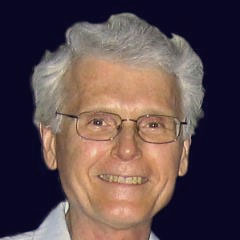As Congress considers a bill to reauthorize the FAA this year, it may be helpful for them to review the following historical note and insist that FAA revise their outdated standards for noise intrusion and set lower intensity modern noise standards that reflect current research and practice in other developed countries (e.g., Europe and Australia).
Friends, over the months I’ve been collecting overflight noise data in the area (13 unique Palo Alto vicinity sites plus 5 recordings at my place, and 5 sites between Soquel and where SERFR enters Los Altos), it has become very clear that there is a big discrepancy between the FAA criteria for obnoxious noise and what people on the ground experience. The FAA continues to use the “DNL 65 dB” measure, with a seemingly helpful more recent guideline update (FAA Order 1050.1F, Environmental Impacts: Policies and Procedures, July 2015):
- DNL 65 dB and higher, a noise increase of +1.5 dB
- DNL 60 dB to <65 dB, a noise increase of +3 dB
- DNL 45 dB to <60 dB, a noise increase of +5 dB
Generally we fall in the latter category (< 60 dB), except for excursions for individual overflight peaks that rise to 70-75 dB, but not often enough to raise the DNL level above 60 dB. Also, the increase in background DNL with the addition of ALL aircraft noise averages +3 dB, with statistical excursions above +5 dB at 4 of the sites I’ve measured. Still, the experience of a great number of residents is that the overflight noise is highly to extremely intrusive.
Recently, I came across an interesting historical note written in 2010 by Nicholas Miller who is an acoustic engineer who worked at Bolt Beranek & Newman (BBN) from 1973 – 1981, when he left to co-found the consulting firm Harris, Miller, Miller, & Hanson Inc. (HMMH). It is well known that the “DNL 65 dB” criterion was developed by Theodore J. Schultz at BBN based on a report prepared for the U. S. Dept. of Housing & Urban Development in 1971. Miller knew Schultz and in his note tried to reconstruct how the “DNL 65 dB” came about and was cast into law. His article is interesting to read in full, but the most illuminating part includes the following passage:
“… For our purposes, i.e., for aircraft, in Report No. 2005R, he identified ‘about NEF 30’ (~DNL 65) as the criterion of acceptable exposure in the U.S. This criterion appears to be a synthesis of what other countries were doing. But note what he says about this criterion: ‘It should be emphasized that criteria in the NEF 30 range must be regarded as provisional. In each of the national studies in which these limits were developed, these levels of noise showed up as ‘maximum tolerable’ and were regarded as turning points above which annoyance increased very rapidly; but sizable portions of the population were seriously disturbed at much lower levels. These turning points, however, were seized by the authorities and treated as acceptable levels such that special precautions and noise abatement measures are required only for more severe exposure.’ [Ted’s emphasis] ‘The situation is even more extreme in the U.S., since the criteria are based on overt action in terms of complaints or legal action. It is well known that serious public annoyance is prevalent long before official complaints are lodged. It is therefore obvious that these criteria are not adequate for aircraft noise abatement in the long run, since they are deliberately permissive.’
Schultz’ ‘Synthesis’ JASA article, after long analyses and descriptions, provides a way to choose a ‘community noise level suitable for a living environment….’ He does this in a graph (Figure 23 in the article) that plots, as a function of Ldn, % U.S. populations exposed to values of Ldn or higher, and % of people experiencing different types of effects at a given Ldn – high annoyance, sleep or speech interference. What he tries to offer decision-makers is information that balances what is desirable with what is feasible. We have forgotten, or never knew, that high annoyance was only one of the effects he proposed minimizing or limiting in selecting a level for a suitable environment.
Meanwhile, the U.S. EPA’s Task Group III, led by Henning von Gierke, in responding to the Noise Control Act of 1972, recommended Ldn 60 as the limit of compatibility, and based this conclusion on minimizing annoyance, complaints and community reaction, and speech interference both outdoors and indoors.
Finally, we also know that for the Maryland Aviation Administration in 1975, Schultz recommended Ldn 65 as the residential standard, to be reduced to Ldn 60 when ‘the U.S. fleet noise level is reduced 5 dB below 1 July 1975 levels,’ Maryland Department of Transportation State Aviation Administration, Selection of Airport Noise Analysis Method and Exposure Limits, January, 1975.
My conclusions? These folks at the beginning tried to account for all the effects they were aware of and had confidence in, and balance what might be desirable with what would be feasible. And they all suspected or decided that 65 CNEL / Ldn was likely too high as a long-term goal…”
So the originator of the “DNL 65 dB” criterion himself knew full well that it was inadequate and did not fairly measure the threshold for obnoxious noise. Still, here we are 45 years later laboring under the same misinformed criterion “seized by the authorities” (i.e., cast into federal law) because it has afforded them the fullest latitude in approving noise intrusions that are truly onerous to those who happen to live under their influence, but without the recourse of having had prior notification/consultation by the authorities, nor effective post-implementation remedy.
May 2016

